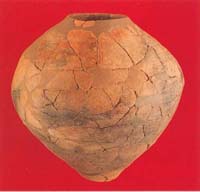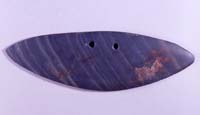The Yayoi period is divided into the "early period" before about 2100 years ago, the "middle period" before about 1 century, and the "late period" before 3 century. Rice farming farming and Yayoi pottery, Stone knife, Continent system polished stone bowl (tool or farming tool with graffiti shaped stone bowl. There are polished and punched tools), Glass ball, American style stone bowl (Sekiso) It is characterized by its use such as
The Ongagawa style (Ongawashiki) pottery (named by the excavated items from the riverside of the Onga River, Fukuoka Prefecture) was used as a document to support the transmission of the Yayoi culture from northern Kyushu. Was a time when it spread from East Japan to East Japan with the development of rice farming culture. In Iwate Prefecture, Kanada Ichikawa ruins in Ninohe City, Daihinata II ruins in Karumeicho (Karmeicho), Kimitari IV ruins, Hyogokan in Kitakami city Ongagawa type earthenware is excavated from ruins. The distribution of the pottery, which has strong commonality with vessel type and decoration methods, in Mabegawa (Mabechigawa) and Kitakami River basins in the north of Iwate Prefecture, northern Kitakami Highlands, etc. It shows that it had spread to
In the middle of Yayoi period (about 1 century ago), Taniki Island (Yagishima) in Ichinoseki City, Hashimoto and Tokiwahirocho in Mizusawa-ku, Oshu-shi, Numakami and Sakai II in Oshu-shi, Eshi-shi-ku, Oshu-shi The ruins of the alluvial area of the Kitakami River basin, such as under Shimizu, will increase.
At the end of the Yayoi period, in addition to the reduction of stoneware that is believed to be caused by the spread of ironware, it is a thin and uneven piece called "red hole type pottery" derived from the pottery excavated in the red hole (Akana) cave (Iwaizumi town). There is an example that earthenware which applied detailed Jomon of Jomon is excavated in high mountainous area. The fact that pottery was excavated in the mountainous area is considered to have been a part of life other than rice farming during this time.
Yayoi Iwate
Updated Date: 2019-03-15


